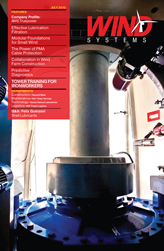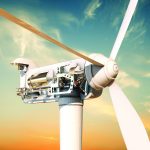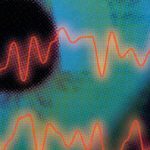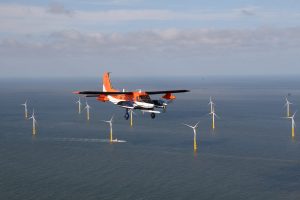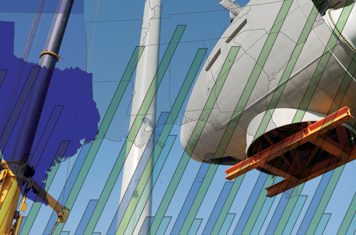Wind manufacturers continue to pursue the design and development of larger machines with larger, lighter, and more-efficient rotors. Along with growth in machine size, the capital investment for each individual wind power plant is increasing as well. Therefore, it is of paramount importance that new designs be manufactured having no major systematic flaws as they will be fielded in large numbers in remote locations with a capital investment in the range of $1 to $2 million per megawatt. The development of accurate computer-based design programs, with support from a testing program, is crucial for high system reliability through improved modeling and simulation in the design phase.
To address the technology development needs of large blades, designers have focused on design innovations to improve performance and reduce blade weight. These innovations include use of new composite materials, novel blade geometries, and optimal material usage. With adequate computer-based design programs, evaluation of new blade designs that incorporate these and other innovations can be accurately conducted to understand their effects and maximize their benefit.
In addition to final full-scale “proof” tests required by international design standards, testing is conducted to evaluate the adequacy of the design programs as well as the credibility of the computer-based models. A specialized field of testing called “modal testing” is well suited for these tasks. Modal testing is an experimental method to measure the dynamic or vibration properties of a structure. An understanding and quantification of the vibration properties is important for turbine and blade evaluation and design.
Firstly, vibration properties are readily computed using computer-based design codes. Therefore, the accuracy of design models can be determined by comparison with physical modal test measurements. Furthermore, discrepancies in the design model can be corrected by modifying the model to accurately predict the actual, measured behavior in which the sources of discrepancy could have occurred in the assumptions when building the model, or changes from the design during manufacturing.
With sufficient agreement between the computed and measured vibration properties, a high level of confidence can be attained so that computer-based design programs can be used to simulate the actual operating conditions. Hundreds of operating conditions and scenarios must be simulated in order to certify a new turbine design. Modal tests provide the measure of the quality or validity needed to evaluate the model.
Secondly, modal testing is used to identify potentially damaging operating conditions called “structural resonances.” These conditions occur when a persistent load is applied at a frequency (i.e. counts per second) that corresponds to the frequency of the structure’s vibration properties. When this happens the size of the motions of the structure can be very large and can cause significant fatigue damage including a catastrophic structural failure. A well-known historical example of a structural resonance that lead to a catastrophic failure regards the Tacoma Narrow’s Bridge in 1940, where the wind conditions resulted in periodic loading at a structural frequency of the bridge. Because wind turbines are rotating structures, structural resonances can be excited at the operating speed and at multiples of the operating speed. Structural resonances must be identified in the design phase so that they can either be eliminated from the design or avoided during operation.
Wind turbines are the largest rotating structures in the world. The investment costs for a large wind farm containing many nominally identical turbines is significant. Modal testing is a specialized type of testing that is needed to validate a design and a model for use in computer-based design and turbine optimization. Use of modal testing for evaluation of design codes and turbine models can reduce development costs and identify potential design flaws that can result in increased maintenance costs, loss of availability, or premature component or system failure.
















